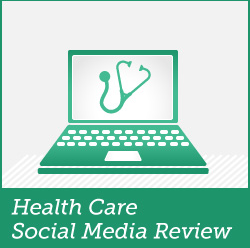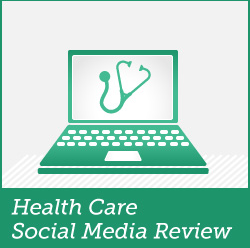

Welcome to the 39th Edition of the HealthCare Social Media Review – The Patient Engagement Edition! I would first like to thank all the hosts and contributors to this blog carnival. We have been going strong for 39 editions and it is because of all your support. And I would especially like to thank my partner in #HCSM, David Harlow, who is always ready with a helping hand to sherpa posts, send out emails, host editions and do whatever it takes to help – thank you, David!
Patient engagement and satisfaction are key topics across the web. Hospitals and physicians are being ranked on patient satisfaction, providing incentive for providers to really try and make their practices and their websites patient friendly
Christina Thielst writes about using social media and social networking to improve public health in her post on Patient Safety and Quality HealthCare, entitled Social Technologies: Meeting the Challenges of Population Health.In her post, Christina explains,
“Social technologies offer powerful tools that can be applied in healthcare settings to improve the quality of care and patient safety, especially as the U.S. healthcare delivery system transforms to accommodate changes brought about by the Affordable Care Act and aging baby boomers.”

Michael Sherman of Wax Impressions offers the post, Medical Checkups More Likely When Parents Go Online, reporting on a new study published in The Journal of Pediatrics, showing that babies were more likely to have all their recommended well-child visits and vaccinations when parents were able to access their child’s health records online.
On Wing Of Zock, Bryan Vartabedian tells us How To Think About Negative Online Reviews. His great advice is as follows,
“We should work for the amazing comments that potentially can flow from patients. Rather than disencouraging patients to share their experiences out of fear of negative reviews, physicians should be inspired to make the value of our care so exceptional that the positive views far outnumber the negative ones.”
Suzie Mitchell of Clear Writing Solutions writes about Boomer Health and has a great idea for boomers to help each other keep in good health. In her post, Boomer Friends Share Apps, she suggests some great apps to help keep people healthy and suggests sharing those apps with friends. Here’s Suzie’s advice,
“…be a really good friend, and share a healthcare mobile app. As Boomers age, it’s important we use every tool in our toolbox to keep us healthy. Aging isn’t for the faint-hearted. If we want to continue hanging out together, we need to stay healthy.”
Brad Smith in the ZocDoc Doctor Blog tells us about inbound marketing and how to keep your online reputation pristine in his post, The Simple Effective Guide to Getting More Patients. Brad says,
“Because healthcare is becoming “consumerized,” patients don’t have to shop around anymore. Educating people 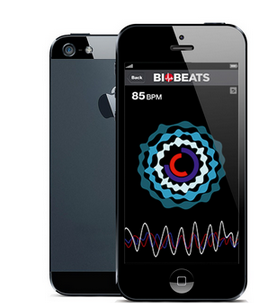 and nurturing them before, during, and after they become patients can help you maximize loyalty among individuals who are willing and able to pay for quality and who can recommend you to their peers.”
and nurturing them before, during, and after they become patients can help you maximize loyalty among individuals who are willing and able to pay for quality and who can recommend you to their peers.”
And here’s a post about a very cool company. BioBeats Sets Your Heartbeat to Music! BioBeats hope to relieve stress by calming you down with music. And hopes to alert the public to areas that may be full of stress. CEO and Founder, David Plans explains,
“As we learn more from our experiments, trials and consumer products we will continue to research and improve clinical grade programmes to demonstrate positive impacts on quality of care, patient outcomes and costs.”
Emily Wisely of evolve digital labs submitted a great post entitled, How Can Hospitals Use Social Media? The post gives great tips to providers on how to use social channels to engage patients. Emily points out that some hospitals like Seattle Children’s Hospital are doing an amazing job of reaching out and engaging patients, while other hospitals seem to not know where to turn or how to manage and use the social media channels available to them.
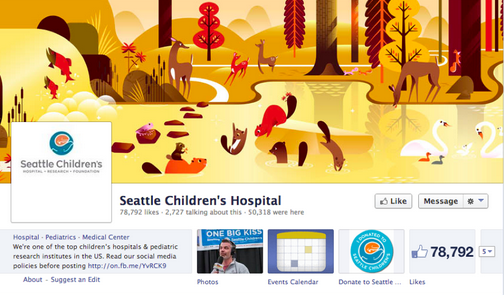
Emily concludes,
“The more I research how the big hospital brands are using social media channels to transfer trust, educate patients, and build a community, it’s pretty exciting to see how local hospitals can implement similar efforts on a smaller scale. Social media allows for two-way communication online, which allows for a degree of transparency that appeals to patients. Hopefully we’ll see more brands investing time and effort into reaching patients online.”
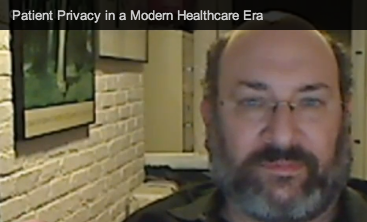
And, of course, when talking of social media and patient engagement, we should always talk of privacy. David Harlow, healthcare lawyer and privacy expert, offers his post, Patient Privacy in a Modern HealthCare Era which is a video of a Google hangout on air about HIPAA and privacy from his website, HealthBlawg, From the post blurb,
“Fear of HIPAA fines frequently results in healthcare innovators being told to put new technology on the back burner. There doesn’t seem to be good answers on how to allow instant communication while maintaining HIPAA compliance.”
And….a very interesting post by Gary Levin from HealthTrain on Health Beneficiary Exchange: How is Social Media Involved? This post explains how social media is helping navigate people towards purchasing insurance through the Insurance Marketplace. As most of us know, the government website, HealthCare.gov has experienced rather severe problems since its opening on Oct 1st. The Navigator program which is supposed to educate and assist patients is not fully implemented and/or difficult to find and contact. But some states are using social media to help their residents.
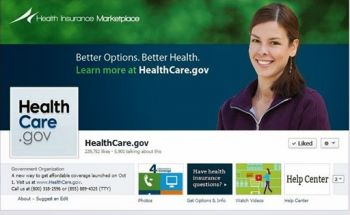
In Ilinois, for example,
“….the federally run Get Covered Illinois website teaches state residents about their insurance options before sending them to HealthCare.gov….social media experts now are engaging with discouraged consumers and posting new information and advice on Twitter, as well as other social media websites….The team also is using Facebook to post updates about HealthCare.gov.”
That’s it Folks! The next edition of the HealthCare Social Media Review will be hosted by David Harlow from HealthBlawg.

